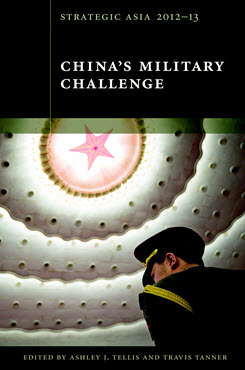Southeast Asia and Australia
Case Studies in Responding to China's Military Power
This chapter examines how Australia and several key countries in Southeast Asia are responding to Chinese military modernization.
EXECUTIVE SUMMARY
This chapter examines how Australia and several key countries in Southeast Asia are responding to Chinese military modernization.
MAIN ARGUMENT
The dominant response of Australia, Vietnam, Indonesia, and many other regional countries to Chinese military modernization is balancing. This approach, however, takes different forms depending on the country and its circumstances. Extensive soft balancing, including efforts to build stronger regional security institutions, is increasingly combined with a trend across the region toward harder forms of balancing. This combined approach of soft and hard balancing is driven largely by China’s growing military capabilities and assertiveness, particularly in the maritime domain.
POLICY IMPLICATIONS
- Concerns in Southeast Asia and Australia about China’s military capabilities and future intentions mean that countries are likely to continue strengthening security ties with the U.S. as a hedge, although each relationship faces its own inherent constraints.
- Preparedness to continue developing closer defense links with the U.S. will depend on internal dynamics in each country; China’s future diplomatic and military behavior, particularly in the South China Sea; and Washington’s ability to persuade the region that its rebalancing strategy is a long-term commitment matched by resources.
- Reductions in U.S. military power in the region following further cuts to its defense budget or a slackening of U.S. diplomatic engagement would erode, and in time potentially reverse, the trend toward strengthening security relationships.
- Security relationships might also erode if Washington appears to back away from strong positions on freedom of navigation.
Southeast Asia is growing in geopolitical importance and has come to play a vital role in the global economy by virtue of straddling maritime chokepoints between the western Pacific and the Indian Ocean. Australia is one step removed from the direct consequences of China’s military modernization compared with maritime Southeast Asia, and two steps removed compared with mainland Southeast Asia. Yet the increasing prominence of the Indian Ocean, the intensifying great-power competition in Asia as a result of the rise of China and India, and the growing range of Chinese weapons together are rendering Australia a more central player in the region. This chapter notes the integrative effects of intraregional economic ties and institution-building efforts but also highlights the diversity of Southeast Asia, the growing role of outside powers (especially China but also India), and the relative weakness of regional security structures.
Although there continues to be an important continental dimension to security dynamics in and around Southeast Asia, China’s emergence (or re-emergence) as a major seagoing power is the trend with the most profound implications for the structure of security interactions in Southeast Asia and beyond. The contemporary Asia-Pacific security agenda is thus largely (although not exclusively) set by maritime developments. Chinese naval modernization is a particular focus for Vietnam, Indonesia, and Australia. This chapter examines how Australia and several key Southeast Asian countries are interpreting the military modernization of the People’s Liberation Army (PLA) and assesses their strategic responses. Rather than attempting to provide an exhaustive survey of Southeast Asian security perceptions and policies or a review of current tensions in the South China Sea, it considers several case studies—with a particular emphasis on Vietnam, Indonesia, and Australia.
Based on this analysis, the chapter argues that claims of a Southeast Asian arms race are overblown and that China is not the only driver of regional defense policies: enduring intraregional differences, internal security challenges, economic growth, and transnational challenges remain strong influences. Beijing’s development of maritime power-projection capabilities, however, is starting to generate force-structure responses in Southeast Asia and further afield in Australia (as well as reactions from extraregional powers), thereby influencing regional security dynamics more broadly. This is a significant departure because traditionally China has exercised influence in Southeast Asia as a land power rather than as a seagoing one. [1] These changing dynamics can be seen in the South China Sea, where they intersect with growing competition for energy among Asia’s great powers. Specifically, China’s growing military presence and increasing assertiveness since mid-2010 have caused Southeast Asian claimant nations and other regional countries to question Beijing’s long-term strategic intentions as new capabilities come online. Tensions between China and the Philippines over Scarborough Shoal are only the latest manifestation of a pattern that goes back to the 1970s and 1980s but has recently taken on a sharper edge because of Beijing’s increased clout and confidence, the increasing capabilities of the PLA Navy (PLAN), and greater prospects for the United States and its allies to be drawn into a conflict.
The first section of this chapter outlines the growing strategic importance of Southeast Asia and Australia. The next section addresses how the security perceptions of key regional countries themselves are changing and examines the different factors that are shaping these countries’ responses to China. Following that discussion is a treatment of the strategies adopted by Australia and key countries in Southeast Asia in response to the shifting security environment, with a particular focus on the maritime security domain. This section highlights common elements across strategies, dealing in turn with internal balancing, or measures a country takes to strengthen its own capabilities; external balancing through formal treaty relationships; and softer forms of balancing (e.g., through thickening security ties with other regional countries or through institution-building). The section attempts to explain how regional states weight these elements differently in their own specific…
Endnotes
[1] See Robert S. Ross, “China’s Naval Nationalism: Sources, Prospects, and the U.S. Response,” International Security 34, no. 2 (2009): 46–81.
Strategic Asia
The Strategic Asia annual edited volume incorporates assessments of economic, political, and military trends and focuses on the strategies that drive policy in the region. Learn more about Strategic Asia.


